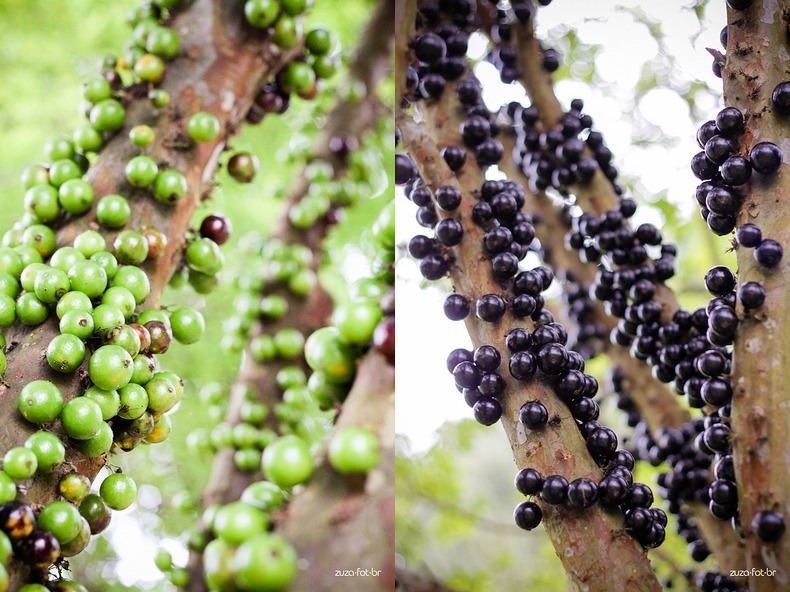Jabuticaba ; The Tree That Bear Fruits On It's Trunk
-
Jabuticaba is a Brazilian grape tree found in the states of Minas Gerias and Sao Paulo, in the south of Brazil. The fruit grows directly from the trunk and branches of the tree, which gives the Jabuticaba tree a very unusual appearance. The fruit itself is a small and round, about 3 to 4 cm in diameter, with one to four large seeds, a thick, deep purple colored skin and a sweet, white or rosy pink gelatinous flesh. Naturally the tree may flower and fruit only once or twice a year, but when continuously irrigated it flowers frequently, and fresh fruit can be available year round in tropical regions. During Jabuticaba season in Minas Gerais, thousands of street vendors sell fresh Jabuticaba in small net bags, and the sidewalks and streets are stained the same deep purple by discarded Jabuticaba skins.

Jabuticaba is largely eaten fresh, but because the fruit starts to ferment just 3-4 days after harvest, they are often used to make jams, tarts, strong wines, and liqueurs. Due to the extremely short shelf-life, fresh Jabuticaba fruit is very rare in markets outside of areas of cultivation. The fruit also has many medicinal uses. Traditionally, an astringent decoction of the sun-dried skins has been used as a treatment for hemoptysis, asthma, diarrhoea, and gargled for chronic inflammation of the tonsils. It also has several potent antioxidant and anti-inflammatory anti-cancer compounds.
Although the Jabuticaba grows in most regions of Brazil, it’s found mostly in Minas Gerias. It’s association with the state is so strong that the Jabuticaba tree appears on the coat of arms of the city of Contagem, and another city in Minas Gerais, Sabará, hosts a Jabuticaba festival annually.




-

-
I wonder how it taste like~
-
Melons amd fruits lover
Yup haha. Must be really delicious. I love pineapple and all kind of melons, wouldnt harm to try it haha
-
nom nom nom
